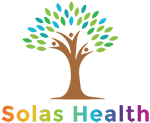
Middle-Aged Adults and Opioid Use Disorder
People of all ages from all walks of life can struggle with addiction. According to the World Health Organization, nearly 62 million people worldwide use opioids recreationally every year. In the United States, nearly 2 million people use opioids every year. In fact, one-third of Americans know someone who is or has been addicted to opioids or prescription narcotics, according to the American Psychiatry Association. Opioid use disorder is a progressive disorder that needs treatment. People in their 30s, 40s and 50s are just as likely as younger people to experience addiction firsthand. People over 50 also are having higher rates of addiction than in the past.
According to the National Safety Council, about 72% of opioid overdose deaths are 25-54 years old. The pandemic, financial insecurity, or career changes have taken a toll on most people in America. Loneliness, isolation, and other social issues have led to a significant uptick in substance use in general. Much of the pandemic has been traumatic and life-altering for people.
How Do Middle-Aged Adults Become Addicted to Opioids?
Nobody who gets addicted to opioids does it on purpose. All substance use disorders are disorders of the brain. Drugs change the way people think and feel. A person who has opioid use disorder is addicted to the drug. It slowly can take over a person's life. They may start acting differently or work to hide their drug use. However, for most people, addiction is an unsustainable way of life. It is full of chaos, trauma, and loss. Yet they still may struggle with breaking free from the cycle of drug use.
Older adults who become addicted to opioids are just like anyone else with an addiction. They start using drugs to relax or “feel good.” Many people who live with opioid use disorder initially took the drug as a legally prescribed medication but started using them more and now are physically dependent. Others may have tried opioids as a street drugs.
While one scenario may have less stigma, the disease is the same. Drug use changes how people think, feel, and even process information. Their behavior will change as well. The body becomes dependent on opioids, making it, so a person experiences intense withdrawal effects when trying to stop using. For people with opioid use disorder, treatment such as Medication-Assisted Treatment can be life-changing.
Opioid Use Disorder, Withdrawal, and MAT
Getting sober is the first step to reclaiming your life from addiction. There are many reasons people get sober. Some people have legal trouble, while others have had addiction devastate their relationships or careers. No matter your initial reason for getting sober, it’s valid. All of them are valid. Staying sober is the key to reclaiming your life.
People with opioid use disorder often experience intense cravings for opioids. They may act irrationally or impulsively when pursuing their next high. Withdrawal symptoms, such as shivering, sweating, nightmares, and deep cravings, are part of withdrawing from a highly addictive opioid like Oxycontin or fentanyl.
Medication-Assisted Treatment (MAT) is considered the gold standard for treating people with opioid use disorder. Suboxone and other MAT drugs help reduce cravings and prevent withdrawal symptoms. MAT is remarkably successful alongside therapy, and the FDA considers it a science-backed treatment for opioid use disorder.
Getting Help For Opioid Use Disorder
If you or somebody you love is struggling with opioid use, we’re here to help. We offer Medication-Assisted Treatment and compassionate care to residents of North Carolina. Give us a call at 910-295-7246 to learn more about how we can help you start the path
If you are in need of help, please call us at: 910-295-7246 or message us.
Categories
opioids
